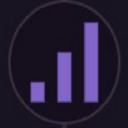-
 bitcoin
bitcoin $111145.080499 USD
0.75% -
 ethereum
ethereum $3928.989005 USD
1.66% -
 tether
tether $1.000226 USD
-0.02% -
 bnb
bnb $1108.209329 USD
-2.26% -
 xrp
xrp $2.545944 USD
6.36% -
 solana
solana $193.960655 USD
0.72% -
 usd-coin
usd-coin $1.000128 USD
0.02% -
 dogecoin
dogecoin $0.199304 USD
2.23% -
 tron
tron $0.297908 USD
-4.88% -
 cardano
cardano $0.656962 USD
2.13% -
 hyperliquid
hyperliquid $39.225782 USD
-1.92% -
 chainlink
chainlink $17.897108 USD
2.99% -
 ethena-usde
ethena-usde $0.999354 USD
-0.02% -
 stellar
stellar $0.321154 USD
3.36% -
 bitcoin-cash
bitcoin-cash $505.299839 USD
5.10%
How to choose between cross and isolated margin for ETH contracts?
Cross margin uses your entire balance as collateral, reducing liquidation risk but exposing all funds, while isolated margin limits risk to a set amount per trade.
Oct 24, 2025 at 04:19 pm
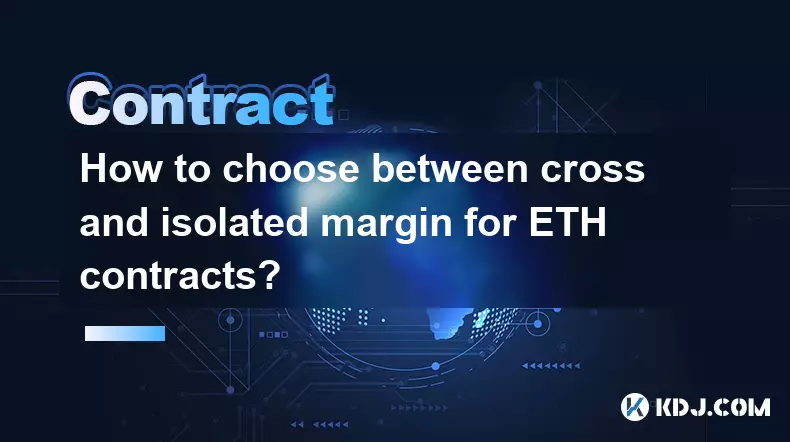
Understanding Margin Modes in ETH Futures Trading
1. Cross margin and isolated margin are two distinct approaches to managing risk and capital when trading ETH perpetual or futures contracts on derivative exchanges. In cross margin mode, the entire wallet balance acts as collateral for open positions. This means that profits and losses from one trade can influence the available margin of another. The system automatically allocates equity across all positions, reducing the chance of liquidation due to temporary price swings but exposing the full account balance to risk.
2. Isolated margin assigns a fixed amount of capital to a specific contract position. Traders manually set the leverage and margin allocated per trade. If the position moves against them, only the designated margin is at risk. Once that margin is depleted, the position is liquidated without affecting other trades or the rest of the account balance. This provides precise control over exposure and potential loss per trade.
3. One key difference lies in how liquidations occur. In cross margin, because more funds are backing the position, liquidation prices are typically farther from the entry point. However, during extreme volatility, rapid drawdowns can still lead to cascading effects across multiple positions if they share the same cross-collateral pool. Isolated margin offers transparency: traders know exactly how much they stand to lose and where the liquidation level sits based on their chosen leverage.
4. Risk management becomes central when choosing between these modes. A trader with a diversified portfolio of ETH-based derivatives might prefer isolated margin to compartmentalize risk. Each position operates independently, making it easier to track performance and allocate capital strategically. Cross margin suits those who want flexibility and are confident in their overall market outlook, allowing the platform to use available equity dynamically.
When to Use Cross Margin for ETH Contracts
1. Cross margin is advantageous when holding multiple correlated positions, such as long ETH/USDT and short BTC/ETH, where gains in one may offset losses in another. The shared collateral buffer helps sustain positions through short-term volatility without premature liquidation.
2. Traders employing hedging strategies benefit from cross margin because the system considers net exposure. For example, holding both long and short ETH futures reduces effective risk, and cross margin reflects this by requiring less immediate maintenance margin.
3. During periods of high market uncertainty, cross margin can prevent early liquidations caused by flash crashes or spikes. Since the full account equity supports each position, temporary slippage doesn’t immediately trigger closure unless the total equity falls below maintenance requirements.
4. Scalpers and algo traders who maintain numerous small positions simultaneously often rely on cross margin to avoid manually adjusting margins for every single trade. It streamlines operations and ensures efficient use of available funds across a broad strategy footprint.
Scenarios Favoring Isolated Margin in ETH Trading
1. When executing high-leverage speculative plays on ETH price movements, isolated margin allows setting strict boundaries. A trader can allocate 0.1 ETH at 50x leverage without endangering the remainder of their portfolio.
2. New traders testing strategies should use isolated margin to limit downside. Mistakes in order sizing or misjudged entries won’t wipe out the entire account, preserving capital for learning and iteration.
3. Backtesting shows that defined-risk setups perform better over time in volatile assets like ETH. By isolating margin, traders enforce discipline—each decision carries known consequences, fostering consistency in risk-adjusted returns.
4. News-driven events, such as Ethereum protocol upgrades or regulatory announcements, create sharp price reactions. Using isolated margin enables positioning with confidence, knowing that adverse moves will not spill over into unrelated holdings.
Risk Control and Platform-Specific Considerations
1. Some exchanges calculate funding rates, fees, and liquidation engines differently depending on margin mode. Traders must review how these mechanics interact with ETH contract specifications on platforms like Binance, Bybit, or OKX.
2. Adjusting margin mode mid-trade is possible on most platforms, but timing matters. Switching from isolated to cross during a losing position increases exposure unexpectedly, potentially amplifying losses if not monitored closely.
3. User interface design impacts decision-making. Platforms that clearly display liquidation prices, ROE (return on equity), and margin ratios help traders assess whether cross or isolated settings align with current market structure and personal tolerance.
4. Historical data suggests that isolated margin leads to fewer forced exits during choppy consolidation phases in ETH markets. Because thresholds are rigid, there's no reliance on fluctuating account-wide equity levels that may dip momentarily under pressure.
Frequently Asked Questions
What happens to unrealized PnL in isolated margin mode?Unrealized profit or loss directly affects the margin balance within the isolated position. If losses accumulate, the available margin decreases proportionally, bringing the position closer to liquidation. Gains increase effective equity but cannot be accessed until the position is closed.
Can I change leverage while using isolated margin?Yes, most exchanges allow leverage adjustment on active isolated positions. Increasing leverage lowers the liquidation price for longs (or raises it for shorts), tightening the safety buffer. Decreasing leverage has the opposite effect, providing more room against adverse moves.
Does cross margin affect my borrowing power on lending platforms?Not directly. Margin mode applies only to derivative positions. However, funds used as collateral in cross margin are not available for withdrawal or transfer to spot or lending accounts, effectively reducing accessible liquidity elsewhere.
Is one margin mode inherently safer than the other?Safety depends on usage context. Isolated margin limits maximum loss per trade, offering structural protection. Cross margin enhances survival during transient volatility but risks broader exposure. Neither is universally safer; proper configuration aligned with strategy determines effectiveness.
Disclaimer:info@kdj.com
The information provided is not trading advice. kdj.com does not assume any responsibility for any investments made based on the information provided in this article. Cryptocurrencies are highly volatile and it is highly recommended that you invest with caution after thorough research!
If you believe that the content used on this website infringes your copyright, please contact us immediately (info@kdj.com) and we will delete it promptly.
- Essex Post Office, 5p Coins, and King Charles: A Royal Mint Revelation!
- 2025-10-23 10:30:16
- Waymo's Newark Airport AV Tests: Alphabet's AI Gamble Pays Off?
- 2025-10-23 10:30:16
- King Charles 5p Coins: A Royal Flush in Your Pocket?
- 2025-10-23 10:35:18
- Solana, Crypto Advisory, and Forward Industries: A New York Minute on the Future of Finance
- 2025-10-23 08:51:22
- MAGACOIN: Ethereum Whales Dive into the Hottest Presale of 2025
- 2025-10-23 08:51:22
- Kadena's End of the Road? KDA Token Plummets Amid Project Abandonment
- 2025-10-23 08:55:34
Related knowledge

What are quarterly vs. perpetual ADA contracts?
Oct 19,2025 at 08:55am
Understanding Quarterly and Perpetual ADA ContractsDerivatives trading in the cryptocurrency space has expanded rapidly, offering traders various inst...

How to find historical price data for ADA contracts?
Oct 18,2025 at 10:18pm
Understanding ADA and Its Market Data Availability1. Cardano’s native cryptocurrency, ADA, operates on a decentralized blockchain that supports smart ...
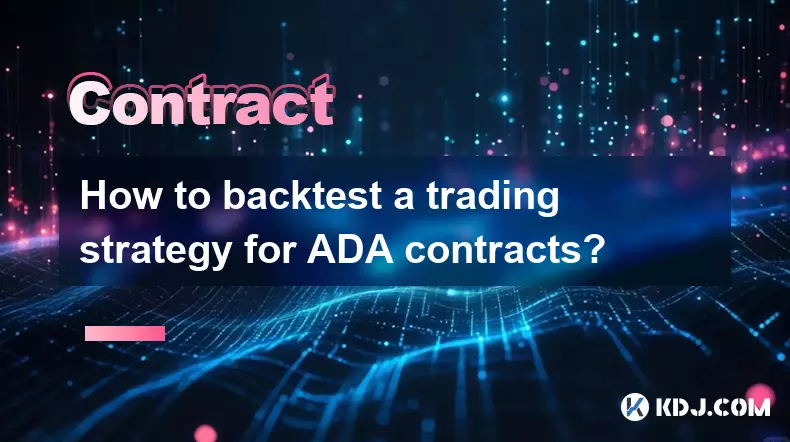
How to backtest a trading strategy for ADA contracts?
Oct 21,2025 at 02:37pm
Understanding the Basics of Backtesting ADA Contracts1. Backtesting a trading strategy for Cardano (ADA) contracts involves applying historical price ...

How to read the order book for ADA contracts effectively?
Oct 22,2025 at 06:37am
Understanding the Structure of the ADA Order Book1. The order book for ADA contracts displays a real-time list of buy and sell orders organized by pri...
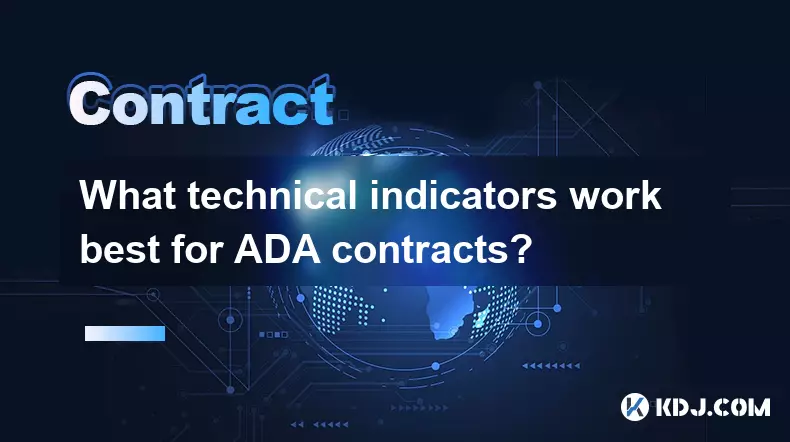
What technical indicators work best for ADA contracts?
Oct 23,2025 at 06:36pm
Understanding the Role of Technical Indicators in ADA TradingTechnical indicators are essential tools for traders analyzing Cardano (ADA) contracts. T...
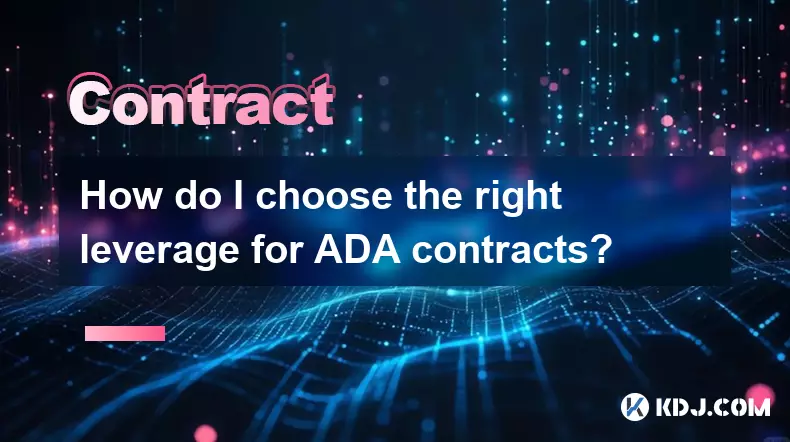
How do I choose the right leverage for ADA contracts?
Oct 25,2025 at 12:09pm
Understanding Leverage in ADA Futures Trading1. Leverage allows traders to control a larger position in Cardano (ADA) with a smaller amount of capital...

What are quarterly vs. perpetual ADA contracts?
Oct 19,2025 at 08:55am
Understanding Quarterly and Perpetual ADA ContractsDerivatives trading in the cryptocurrency space has expanded rapidly, offering traders various inst...

How to find historical price data for ADA contracts?
Oct 18,2025 at 10:18pm
Understanding ADA and Its Market Data Availability1. Cardano’s native cryptocurrency, ADA, operates on a decentralized blockchain that supports smart ...

How to backtest a trading strategy for ADA contracts?
Oct 21,2025 at 02:37pm
Understanding the Basics of Backtesting ADA Contracts1. Backtesting a trading strategy for Cardano (ADA) contracts involves applying historical price ...

How to read the order book for ADA contracts effectively?
Oct 22,2025 at 06:37am
Understanding the Structure of the ADA Order Book1. The order book for ADA contracts displays a real-time list of buy and sell orders organized by pri...

What technical indicators work best for ADA contracts?
Oct 23,2025 at 06:36pm
Understanding the Role of Technical Indicators in ADA TradingTechnical indicators are essential tools for traders analyzing Cardano (ADA) contracts. T...

How do I choose the right leverage for ADA contracts?
Oct 25,2025 at 12:09pm
Understanding Leverage in ADA Futures Trading1. Leverage allows traders to control a larger position in Cardano (ADA) with a smaller amount of capital...
See all articles



































































